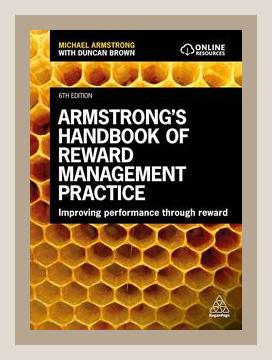Human Resources and Talent ManagementLabor Relations
**
Introduction
“A Handbook of Employee Reward Management and Practice” by Michael Armstrong, published in 2007, serves as a comprehensive guide to designing and implementing effective reward strategies in organizations. It explores the diverse facets of reward management, emphasizing both the theoretical and practical aspects that assist HR professionals and employers in fostering motivation and engagement among employees. This summary encapsulates the key points and suggestions presented in the book, distilled into actionable insights.
1. Understanding Reward Management
Key Points:
– Definition: Reward management refers to the strategies, policies, and processes required to ensure that the value of employees and their contribution to the organization is recognized and rewarded.
– Objectives: These include attracting, retaining, and motivating employees, fostering engagement, and aligning reward systems with organizational goals.
Actionable Steps:
– Strategy Formulation: Conduct an internal review to understand what forms of rewards align with company goals and employee expectations.
– Policy Development: Draft clear policies that specify how rewards are earned, distributed, and evaluated.
2. Types of Rewards
Key Points:
– Intrinsic vs. Extrinsic Rewards: Intrinsic rewards are non-monetary and include job satisfaction, responsibility, and personal growth. Extrinsic rewards are monetary or tangible benefits such as salaries, bonuses, and benefits.
– Examples: Job enrichment, recognition programs, merit pay, and stock options.
Actionable Steps:
– Survey Employees: Regularly survey employees to determine their preference for different types of rewards.
– Diversified Reward Portfolio: Implement a mix of intrinsic and extrinsic rewards to cater to diverse employee needs.
3. Pay Structures
Key Points:
– Salary Structures: Includes basic pay, pay grades, and pay bands.
– Example: A company might use broadbanding, which consolidates numerous pay grades into fewer bands with broad salary ranges to provide flexibility and reward high performance.
Actionable Steps:
– Market Research: Conduct market salary surveys to benchmark against industry standards.
– Customization: Develop salary structures that reflect the specific needs and strategy of the organization while maintaining competitiveness.
4. Performance-Related Pay
Key Points:
– Definition: Systems where the pay levels are based on the assessment of individual, team, or organizational performance.
– Examples: Commission-based pay, bonuses, profit-sharing.
Actionable Steps:
– Transparent Criteria: Establish clear, measurable performance criteria to avoid ambiguity and ensure fairness.
– Regular Reviews: Conduct regular performance appraisals to adjust pay levels based on updated performance data.
5. Employee Benefits and Non-Financial Rewards
Key Points:
– Benefits: Include health insurance, retirement plans, paid time off, and other perks.
– Non-Financial Incentives: Flexible working hours, professional development opportunities, and recognition.
Examples: Offering gym memberships or wellness programs as part of health benefits.
Actionable Steps:
– Customization: Tailor benefit packages to meet the specific needs of your workforce demographics.
– Involve Employees: Solicit employee feedback on what benefits they value the most.
6. Job Evaluation
Key Points:
– Purpose: Establishing the relative worth of jobs within an organization.
– Methods: Analytical methods (e.g., point factor analysis) and non-analytical methods (e.g., job ranking).
Examples: Using a point factor system to evaluate and compare job roles based on factors such as skill, effort, and responsibility.
Actionable Steps:
– Standardize Processes: Implement a consistent job evaluation process across the organization to maintain equity.
– Training: Provide training for HR professionals on job evaluation techniques.
7. Developing Reward Policies
Key Points:
– Principles: Transparency, fairness, consistency, and alignment with organizational goals.
– Example: A reward policy might detail the criteria and process for distributing annual bonuses, ensuring that it supports company performance targets.
Actionable Steps:
– Consultation: Involve stakeholders, including managers and employees, in the development of reward policies.
– Documentation: Clearly document and communicate policies across the organization to ensure everyone understands the reward criteria and processes.
8. Reward Management for Different Employee Groups
Key Points:
– Diverse Workforce: Different employee groups (e.g., executives, middle management, staff) have different reward preferences and needs.
– Examples: Executives might prefer long-term incentives, while entry-level employees might value immediate cash bonuses.
Actionable Steps:
– Segmentation: Segment the workforce and customize reward strategies to cater to the different needs of each group.
– Flexible Options: Offer a menu of reward options from which employees can choose according to their preferences.
9. Implementing Reward Strategies
Key Points:
– Change Management: Effective communication and training are crucial for the successful implementation of new reward strategies.
– Monitoring and Evaluation: Regularly assess the impact of reward strategies and adapt them as needed.
Examples: Pilot testing a new reward system in one department before a company-wide rollout to identify potential challenges and improvements.
Actionable Steps:
– Pilot Programs: Start with a pilot program to test new reward initiatives and gather feedback.
– Continuous Improvement: Use performance metrics and employee feedback to continuously refine and improve reward strategies.
10. Legal and Ethical Considerations
Key Points:
– Compliance: Ensure that reward strategies comply with labor laws and regulations.
– Ethics: Promote fairness and equity to avoid discrimination and favoritism.
Examples: Developing a whistleblower policy to report and address unethical practices related to reward management.
Actionable Steps:
– Legal Review: Regularly review reward policies with legal counsel to ensure compliance.
– Ethical Standards: Implement clear ethical standards and training programs to guide managers in fair reward distribution.
Conclusion
Michael Armstrong’s “A Handbook of Employee Reward Management and Practice” provides an exhaustive resource for HR professionals to design, implement, and refine reward systems that are fair, motivating, and aligned with organizational goals. By taking concrete steps such as conducting market research, tailoring reward packages, establishing transparent criteria, and continuously monitoring and improving reward practices, organizations can leverage rewards to attract, retain, and inspire their workforce effectively.
Each chapter of the book not only delves into the theoretical underpinnings of reward management but also provides practical examples and actionable strategies that can be readily implemented. Whether dealing with salary structures, performance-related pay, or non-financial incentives, the guidance offered in this book is indispensable for creating a motivated and committed workforce.
